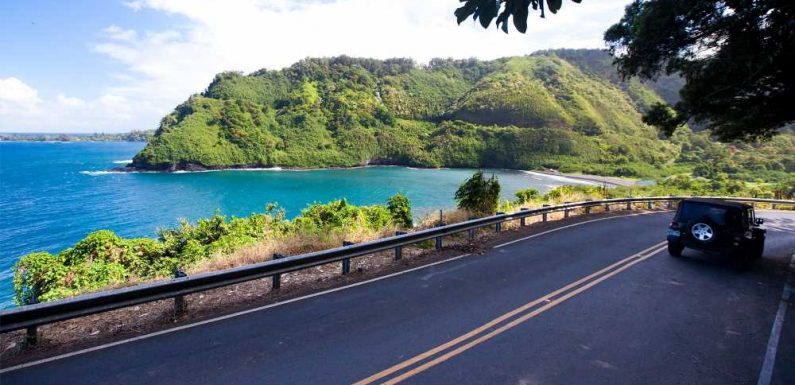
The Hawaiian word huliau roughly translates as a time of transformative change, particularly one where progress stems from recalling lessons of the past.
The Hawaii Tourism Authority (HTA), as a proxy for the Aloha State’s tourism industry, is deep in a period of huliau. This summer, under new leadership, the agency reorganized with a focus on balancing destination management with destination marketing.
But the biggest shake-up came from the state Legislature, which completely reshaped the agency’s financing.
Calls to address tourism’s impacts on residents were already growing in 2019, a year when Hawaii welcomed a record 10.4 million visitors. Then Covid-19 struck, and for seven months tourism virtually ceased. Residents basked in traffic-free roads and unfettered access to beaches and hiking trails.
Then, driven almost entirely by mainland tourism, visitors rushed back to the Islands. By June, the monthly visitation was at 84% of 2019 levels. But pandemic protocols meant fewer businesses and attractions were open, and the ones that were had limited access, generating long lines and frustration.
John De Fries took over as CEO and president of the HTA in September and got to work implementing a 2020-2025 strategic plan based on four pillars: natural resources, Hawaiian culture, community and brand marketing. One initiative already underway is to create community-driven Destination Management Action Plans for each county.
In July, De Fries announced a restructuring at the top rungs of the HTA to better focus on destination management, including the creation of a chief brand officer position and a new director of planning role, to oversee execution of the management plans.
While the plans and restructuring were underway, the state Legislature was hearing from residents about tourism’s headaches. There have been protests over traffic to a popular Oahu beach, community meetings held about gridlock along the Hana Highway on Maui and outrage over social media posts depicting tourists harassing an endangered Hawaiian monk seal.
For years, the state Legislature had been discussing the idea of reining in the HTA, which was funded through a fixed disbursement from the Transient Accomodations Tax (TAT). Now, it had the momentum and votes to pass a new funding law and override a gubernatorial veto.
“Numerous people in the public are calling for the reduction of HTA, even calls for the elimination of HTA and putting the requirement for marketing on the private sector,” state Rep. Richard Onishi said during an HTA meeting in April. “It goes back to this issue of what HTA is supposed to be doing, and that’s a message that I think is not well communicated.”
While the finances for the current fiscal year are largely unchanged, thanks to a combination of federal pandemic aid and the continuation of a portion of the TAT, the HTA will need legislative approval for its annual budget beginning next year.
“Now that it’s become law, the staff and I are intent on making it work,” said De Fries. “The 2023 fiscal year will be a whole new ballgame. Nothing has been appropriated for HTA, and we’ll have to go make our case, which we intend to do.”
Those tied to the hospitality industry call the moves shortsighted, as HTA marketing efforts will be important as the state works to recover its international and group visitors.
“Two of your major higher-spending customer segments are not traveling yet, and it just defies logic to cut resources to HTA right now,” said hospitality consultant Keith Vieira, who is one of the original HTA board members. “We’re taking our hands off the steering wheel.”
The legislature also stripped the HTA of its procurement authority, limiting its ability to launch new contracts and campaigns or address sudden developments such as the pandemic.
“It will really tie their hands in terms of their ability to handle whatever crisis they’re facing, man-made or natural,” Hawaii Lodging and Tourism Association president Mufi Hannemann said.
The pandemic shutdown gave the Islands time to address overtourism, and hotels the space to implement customer-centric technology. What results is a new visitor experience in the Aloha State.
The state Legislature also cut a portion of the TAT that went to individual counties. Now, each county has the authority to impose an additional 3% TAT. If that comes to pass, the combined TAT and general excise tax for Hawaii will surpass 18%, one of the highest rates in the country. “It makes Hawaii less competitive,” Vieira said. “Everyone goes online, everybody price shops. It’s about the value proposition and what you think is fair.”
While the HTA lacks the authority to improve trail access or ease traffic woes, it can help coordinate among agencies and demonstrate value by driving progress, De Fries said. To that end, the HTA will put out a request for proposal later this year for a program to integrate the reservation systems across state and county parks into one application.
Hannemann said efforts like that, and regulating the illegal vacation rental industry, which is blamed for many of the negative impacts on residents, will go a long way toward helping the HTA build its case for funding.
“HTA is not going away anytime soon, the legislators are not going away, and the industry is the largest in the state with no economic diversification initiative on the horizon,” Hannemann said. “Like it, love it or loathe it, tourism is here to stay. So, let’s make it better and work for everyone all the way around.”
Source: Read Full Article












